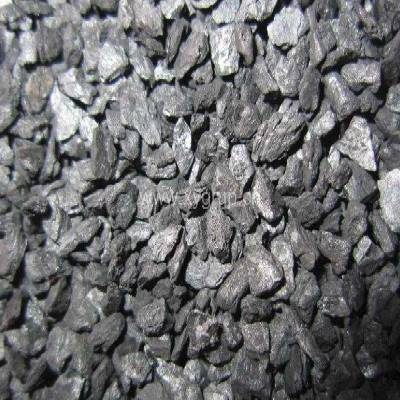The Role Of Activated Carbon In Organic Synthesis
Dates Activated Carbon is one of the commonly used substances in organic synthesis experiments and is mainly used to decolorize and remove impurities. According to the chemistry basic experiment book, the standard method of use of activated carbon is to decolorize it by hot filtration before recrystallization. In fact, activated carbon has other uses. An ingenious use of the properties of activated carbon to distinguish its advantages and disadvantages will bring many conveniences to organic synthesis experiments.
The role of Activated Carbon in organic synthesis mainly includes decolorization, adsorption, and filtration aid. Usually in one operation of activated carbon, it mainly shows one of the aspects, and the other aspects are secondary.
Decolorization
According to the Activated Carbon Manufacturer, the most common role of activated carbon is decolorization. According to the analysis of polarity, activated carbon can be regarded as a non-polar substance, which can be used to adsorb non-polar and small polar pigments, suitable for large polar solvents Use.
Most of the pigments contained in the substance are non-polar or small polar pigments, so the most commonly used decoloring agent is activated carbon, and the most commonly used solvents are water and alcohols.
In general, when decolorization is required, it is not necessary to consider the polarity of the pigment, and it is decolorized directly with activated carbon, and the decolorization effect is judged by observing the change of the solution before and after decolorization.
The general operation process is as follows: the material to be decolorized is added to a certain amount of solvent, heated to completely dissolve, a certain amount of activated carbon is added, stirred for a period of time, hot filtered, and the filtrate is concentrated. The material to be decolorized is a solid or liquid containing visible pigments, mostly solids; the amount of solvent is generally 3-10 times, too little is difficult to operate, and the loss is large during hot filtration; too much cost is too high, and it is not necessary; the solvent is generally Large polar solvents, such as methanol, ethanol and water, if crystallization is needed after decolorization, the most suitable solvent needs to be screened out; the amount of activated carbon added is generally 5-10% of the solute (that is, the substance to be decolored), which can be increased or decreased depending on the situation ; The stirring time generally ranges from 30 minutes to 2 hours, and can be increased or decreased according to the situation; the filtrate is treated according to the situation. If the appearance color does not change much before and after decolorization, activated carbon can be added for repeated decolorization; if recrystallization is required, directly cool the crystal or appropriate After concentration, it is cooled and crystallized; if the substance to be decolored is a liquid, it is generally concentrated to dryness.

Coal Based Activated Carbon
2. Remove impurities
Impurities here mainly refer to insoluble substances, such as inorganic salts, dust and physical impurities. The decolorization of activated carbon actually belongs to the removal of impurities, but the removal of decolorization is organic visible light absorption impurities. The process of removing impurities is very simple, similar to the process of decolorization. After complete dissolution, activated carbon is added, stirred and then directly filtered and concentrated. In fact, simple addition of impurities can be done by directly dissolving the filter without adding activated carbon. The addition of activated carbon is mainly used to help the filtration, which is beneficial to filtration.
3. Adsorption
Adsorption is mainly aimed at tar and viscous impurities. If this kind of material is not added with activated carbon, direct filtration will block the filter medium, and the general effect after adsorption with activated carbon is obvious. When adsorption is mainly used, activated carbon can be replaced with silica gel or diatomaceous earth with little difference. Generally, during the use of activated carbon, activated carbon exhibits three functions of decolorization, impurity removal and adsorption at the same time. Colored impurities enter the interior of activated carbon molecules. Tar and viscous impurities exist between activated carbon particles. During filtration, activated carbon helps filter out insoluble impurities. The filtering process. The three roles are inseparable.
The role of activated carbon in organic synthesis is actually very simple, but other problems often arise in the use of activated carbon. The most common problems are: the decolorization effect of activated carbon is not good, the color of the filtrate is still heavier after multiple decolorizations; the decolorization loss of activated carbon is large, and the loss of decolorization is more than 10% at a time; the activated carbon penetrates the filter paper filter cloth, and the product contains a small amount of activated carbon; plus activated carbon filtration When the filtration is very slow, the filter paper and filter cloth are always blocked; the reaction kettle after using activated carbon is very difficult to wash, and it cannot be cleaned even if it is washed;
The poor decolorization effect of activated carbon is usually related to the polarity of the pigment. It is impossible for the same decolorizing agent to apply to all pigments; the decolorization loss is large, generally because the product is adsorbed on the activated carbon is too large; activated carbon penetrates the filter paper filter cloth, the main reason is The activated carbon model is wrongly selected; the clogged filter paper filter cloth is not only related to the activated carbon model, but also to the particle size of the insoluble matter; as to the difficulty of washing the reactor, it is related to the nature of the activated carbon itself. More detailed content will be discussed later.











